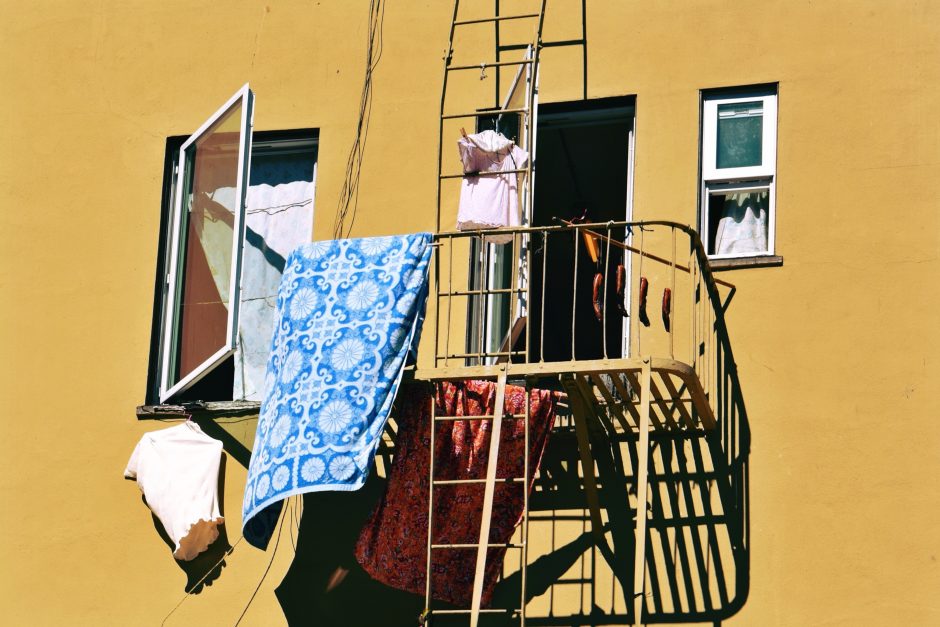Still Life in Blue and Yellow, Haley Cormier
The Sonoran desert is beyond reason.
More than anything else, it is a scene stolen from the apocalypse: tan, craggy rock blooming with poisonous scrub; red dirt that is discernable from rock only in color; laugh lines of wire running parallel to whip scars of asphalt. Short fernlike trees look as ancient as red oaks. Palm trees serve as the only sign of burgeoning civilization, nailed to the ground and cemented there in volcanic rock. They are the only species in the area that remains visibly invasive—now, even we Americans look like we belong here, like we didn’t steal this land from other people.
They sing about purple mountain majesties on the East coast; they have no idea. When Arizona natives go on vacation, we spend our time away grappling with the distinct uneasiness brought on by leaving our amethyst nest. We are too used to looking out past adobe houses and sparkling swimming pools only to come up short at the mountains, obscuring our view of the next valley. Some people, at least, feel safest when sheltered.
* * *
I want to be able to shoot fire from my fingertips. I want the crackling of the monsoon season to run down my arms like electric currents, lightning through my veins…but it always seems to stop when it reaches the cuticle. That is the extent of my power: splitting my skin into hangnails.
This is why I have a semi-antagonistic relationship with “home.” I want nothing to do with shelter, or safety, or any sort of small pond; I want my reach to extend further. I want my power to be more than just self-destructive. Living in a craggily beautiful cage, perpetually mired in 1950s politics, sometimes seems antithetical to that sort of freedom. Staring over the precipice of burgeoning adulthood, I feel a distinctly arid panic.
* * *
The Lost Dutchman’s gold mine is possibly the most famous lost mine in American history, and it is rumored to be nestled somewhere in the Superstition Mountains—a range aptly named, and viewable from my backyard. No one has been able to discern whether or not the mine exists, but people search for it every year; some die trying. The idea that a massive cache of gold has been sitting, unbeknownst to us all, underneath the Superstitions, is nothing if not far-fetched.
Still.
Sometimes, I want to find the treasure under the layers of rock. Arizonans brave the hottest temperatures in the United States, decades of drought, and flora and fauna primed to kill. All of the houses in my neighborhood look exactly the same. We have been trying for years to make up for the fact that we were the only state reluctant to make Martin Luther King Jr. Day a national holiday. At every gate in Phoenix’s Sky Harbor airport, there is at least one old man wearing a Stetson and a bolo tie without a trace of irony. When my brother was in kindergarten, he spent a recess watching a scorpion and a tarantula fight to the death. Our biggest tourist attraction is a giant hole. All evidence points to this state trying very hard to kill us.
And yet, humanity has still made the decision to live here for millions of years. A people once crossed over a land bridge from ancient Siberia, their trek spanning thousands of miles and generations, and some of those travelers chose to set up residence in this patch of desert. Arizona, as it is today, is the culmination of innumerable lives. We have always lived here like owls live inside of cacti: constantly cognizant of the needles; reaching through them for the fruit. The desert’s face is scarred by our presence, and we are scarred where it has fought back. There must be a reason we choose, generation after generation, to stay.
I do not claim to have a universal answer, but what I have learned is this: I have always found the desert most bewitching in the rain. This may be in part due to the infrequency of any sort of precipitation—here, we recieve as much rainfall in a year as other states gather in a couple accumulated storms. Monsoons, our version of torrential rain, arise in the scorching summer after dust storms, which look like the coming of Armageddon in and of themselves. The moment it starts pouring, we all forget ourselves in favor of remembering what it feels like to have an oasis fall down from the sky. Ernest Hemingway thought he knew what a moveable feast was, but he never saw an Arizona monsoon. Living here is beautiful.
Gabby Giffords was shot in the head outside of a Safeway in Tuscon, Arizona, trying to bring the House of Representatives to the people. Miraculously, she survived and has had an incredible recovery despite injuries to her brain. Living here is resilient.
Now an arid land thirsting for rain, the Sonoran desert was once covered by an ancient sea. We still find fossilized clamshells in our yards. This evolution runs parallel to politics: our historically conservative state, by virtue of its increasingly diverse population, is turning from red to purple. We are finally growing into the amethyst of our mountains. Living here is revolutionary.
* * *
Somewhere, buried under layers of sediment, copper, and shale, is the Lost Dutchman’s gold. For each Arizonan it is a different sort of treasure: history, roots, family, culture, character. As with any place, the story of my state grows and changes with every foot that presses a toe to its soil. It is never static, never motionless, never truly stuck in the past. The narrative is extensive, complicated, and self-perpetuating—that is what keeps me here.
Maybe this desert isn’t beyond all reason.

No Comments